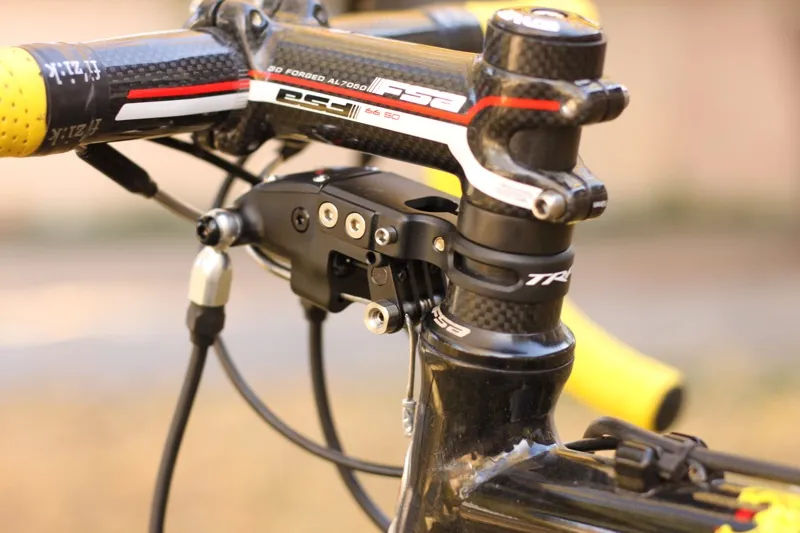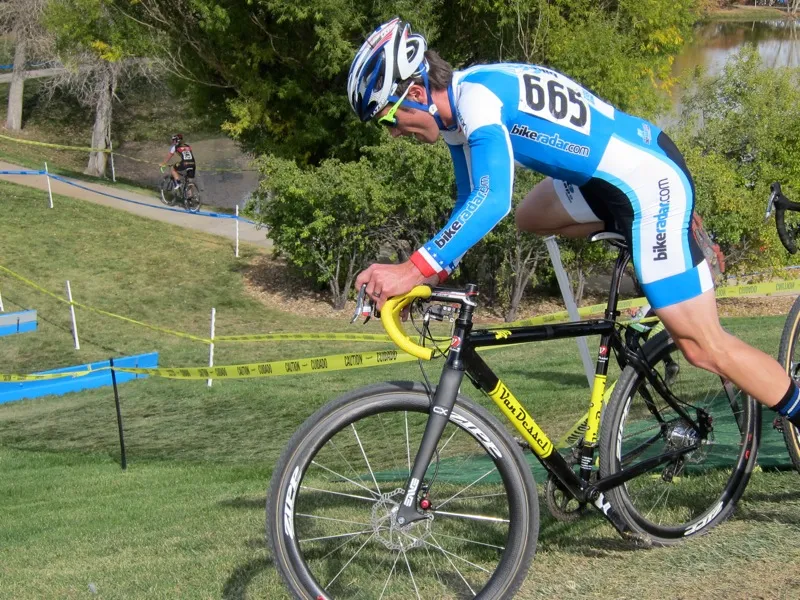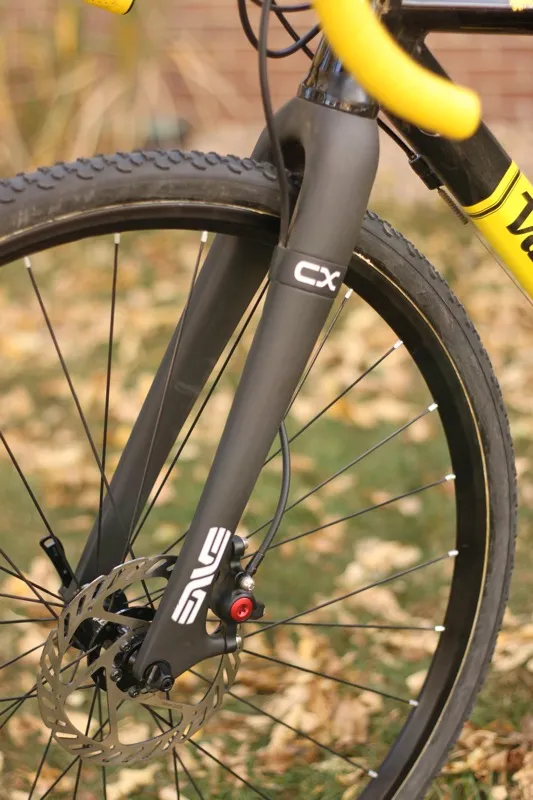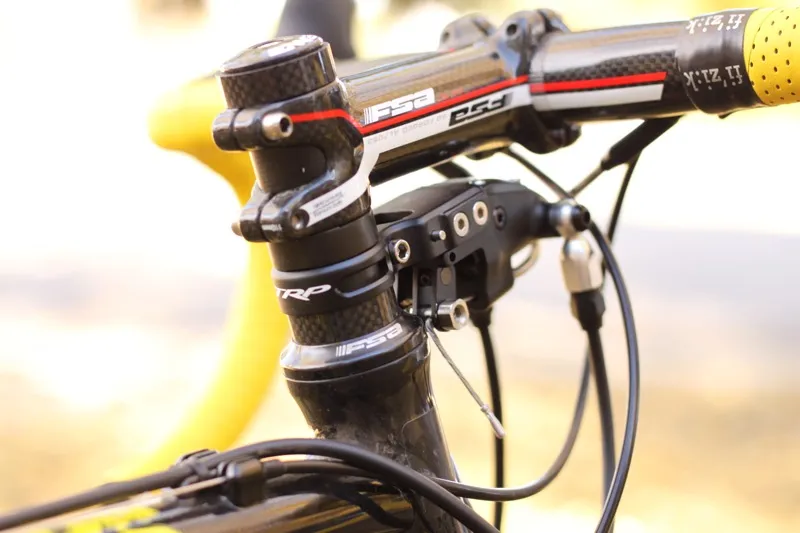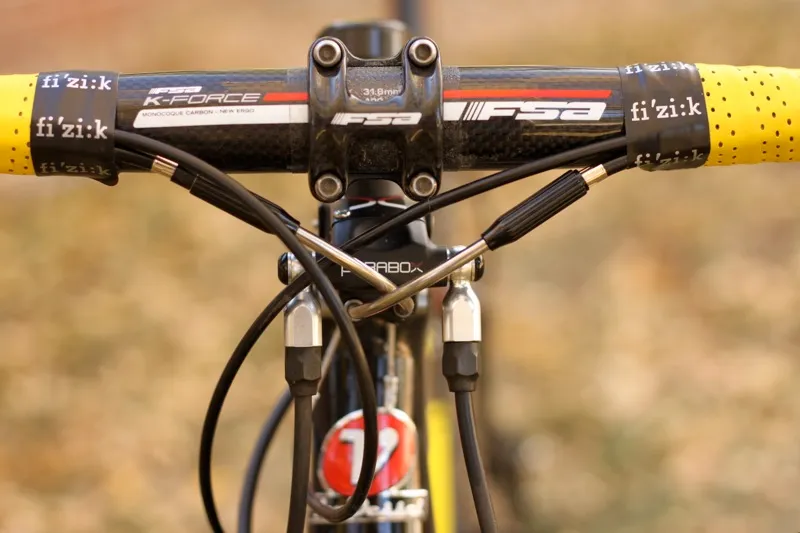Since the UCI lifted their ban on disc brakes for cyclo-cross, the race has been on to develop a hydraulic system for drop-bar bikes. Rumours have been flying regarding what the major manufacturers have been working on but Taiwan’s TRP have beat them to the punch with their Parabox.
It's a stopgap system that pairs standard cable-operated road levers with hydraulic callipers. It offers plenty of power and, more importantly, modulation, and has proved to us the true benefits of hydraulic systems for both cyclo-cross and road usage.
Fitting
The idea behind the Parabox is that two standard brake cables run from the levers to a pair of cylinder actuators on a hydraulic reservoir clamped to the steerer tube. Exiting this unit are two hydraulic hoses that feed the calipers.
While critics may bemoan the hybrid-hydraulic actuation of the Parabox, it actually has one hidden benefit: you can use still use the add-on bar-top brake levers that are especially popular among mountain bikers who race ’cross.
Fitting is a lengthy and fiddly process – our workshop manager George Ramelkamp reckons it would take the average home mechanic a couple of hours, if everything goes smoothly. The supplied instructions are good but the project needs a patient and methodical approach.
One thing to bear in mind if you're thinking of buying a Parabox is that it needs 17mm of steerer tube real estate below the stem. If your frame is on the large size this could cause problems. Check out the video below for a closer look at the Parabox and more on the fitting process:
Unable to load media
Ride & handling
The Parabox braking unit – made up of fluid, lines, master and slave cylinders (calipers) – weighs 497g. That's comparable to most top-end mechanical discs, once you take cable and housing weights into account. So, it's no lighter, and at US$459/£349.99 it certainly isn’t cheaper.
It does, however, work considerably better, based on our first few rides with it. Mechanical disc systems are plagued mainly by friction and housing compression; even with fancy fully sealed cable systems, the 1,500mm span of steel cable and brake housing tends to give a sluggish and mushy feel.
The Parabox avoids this trap: the short (10-12in) runs of cable from the shifters to the steerer tube mounted master box run smoothly, and from there hydraulics take over to provide an excellent, firm lever feel, much like the best road calipers. They’ve stayed that way too, despite more than a few mud baths and power-washings, which isn't the case with even the best cable systems.
Whether on training rides or at races, the TRP system continually impressed, providing a superior action and feel to cable operated brakes. Despite power-washing and poor weather, the lever action stayed smooth. For cyclo-cross, the system was most beneficial on technical courses with frequent speed changes, especially in the mud.
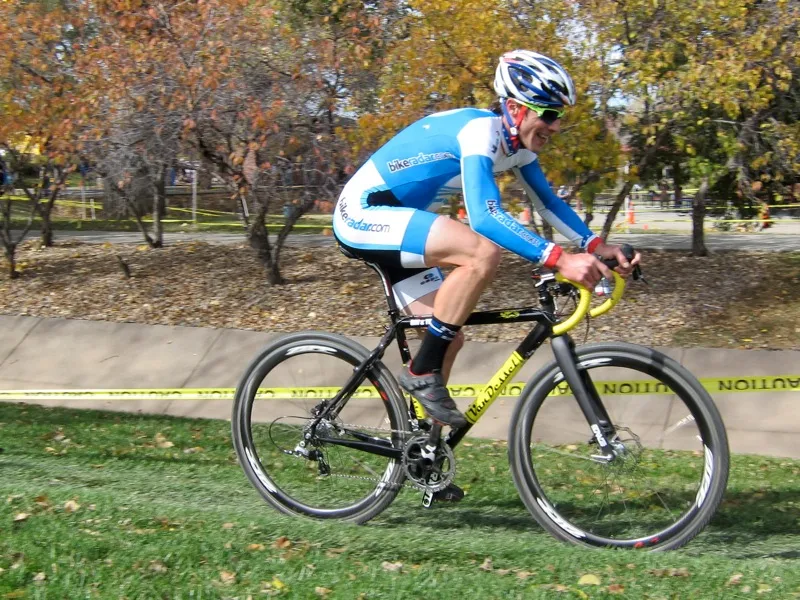
We've already raced TRP's Parabox and, so far, it's impressed us
Power isn’t overwhelming. We've ridden the system with a 160mm front rotor and both 160mm and 140mm rear rotors, and both Shimano Di2 and SRAM Red brake levers. In its most powerful configuration – with SRAM levers and 160mm rotors front and rear – the Parabox matches the best mechanical systems we’ve used.
The big benefit of the TRP system, however, is its better modulation. The Parabox isn’t grabby but it only requires a light touch at the lever to actuate. Power then increases in a linear fashion as you put more of a squeeze on the lever. There’s plenty of power to lock up the wheel, but like any good brake system, it doesn’t trick you into unwanted skids.
The Parabox (and other open hydraulic systems, for that matter) will also self-adjust for pad wear, unlike mechanical disc calipers. In extreme conditions, this can mean the difference between finishing with functional brakes and having a lever bottom out on the handlebar.
The system is very reliable, too. We've run it through extended periods of hard braking at speeds as high as 75kph on 15-minute mountain road descents, at times purposely riding the brakes to create heat, and in all instances the Parabox has passed with flying colors. Even when trying to cause the system to fail it has held up consistently and without fade or any appreciable loss of power.
We had to bleed the rear caliper once during our three-month test, but this was because we needed to shorten the hydraulic line, not through any fault of the system. Our Parabox was supplied with a bleed kit and the process was very simple. We achieved a good bleed at the first attempt.
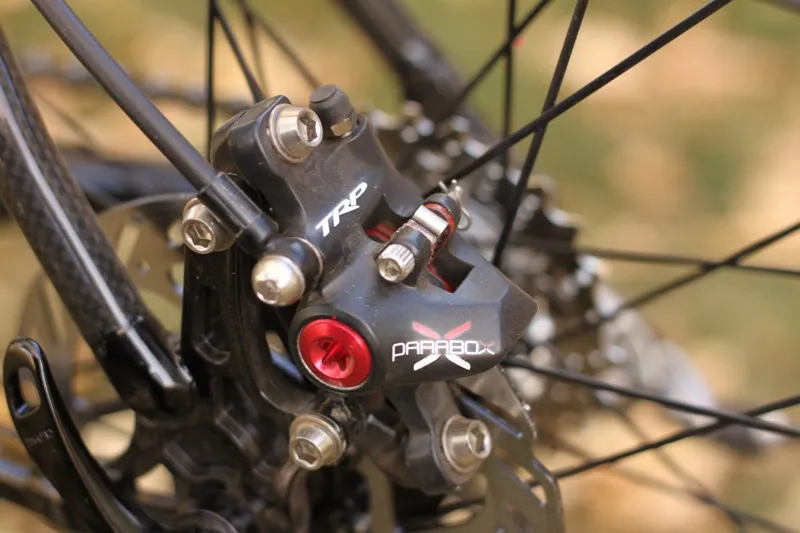
The rear caliper is smaller than the front to save weight. We found it to provide plenty of power, even with a 140mm rotor
After a full season on discs (both the Parabox and Avid mechanicals) we're convinced they'll be commonplace on road and cyclo-cross bikes soon. While it may be a stopgap, TRP's setup has proven itself as a solid braking option, with its performance holding as true on the road as it does off it. It's gone a long way in proving to us the true benefits of hydraulic disc brakes for drop-bar usage.
It's not without flaws, however. It weighs 497g, which is similar to most mechanical setups – ie. not light . Factor in the weight of the rotors – 72g (140mm) or 93g (160mm) per end – and you’re looking at adding close to half a pound compared to rim brakes, and that’s without taking into account the potentially heavier weight of disc-compatible wheels.
Fit can also be a challenge, as the unit requires 17mm of stack height between the stem and the top cap of the headset. Finally, the Parabox isn’t exactly cheap, at more than twice the price of a top-end pair of cantilevers or road calipers.

